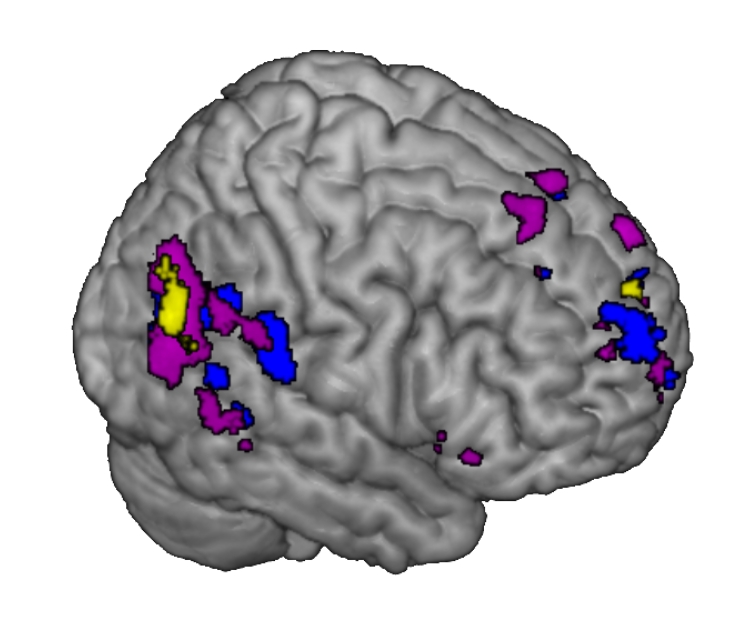In our most recent paper, we investigate how brain stimulation (transcranial Direct Current Stimulation, tDCS) can alter neural activity, and how this is specific to a particular arithmetic operation. We used simultaneous tDCS-fMRI to probe the brain regions that are affected by tDCS. We find that activity in the inferior prefrontal cortex is altered during stimulation, but only so when subjects use arithmetic procedures (compared to fact retrieval). These findings are important because they adress two issues: first, it is largely unknown where tDCS really affects the brain – using simulations, we show that these models provide a useful approximation for where the effect really takes place. Second, we illustrate why there is not one single stimulation protocol that enhances all arithmetic/cognitive functions: the brain uses different networks for different functions. So it only works if we stimulate a network that is actually involved. This is also why we need stimulation protocols that are tailored to a specific function, rather than a general “cognition booster”.
Hauser TU, Rütsche B, Wurmitzer K, Brem S, Ruff CC, Grabner RH. (2016). Neurocognitive effects of transcranial Direct Current Stimulation in arithmetic learning and performance: A simultaneous tDCS-fMRI study. Brain Stim
